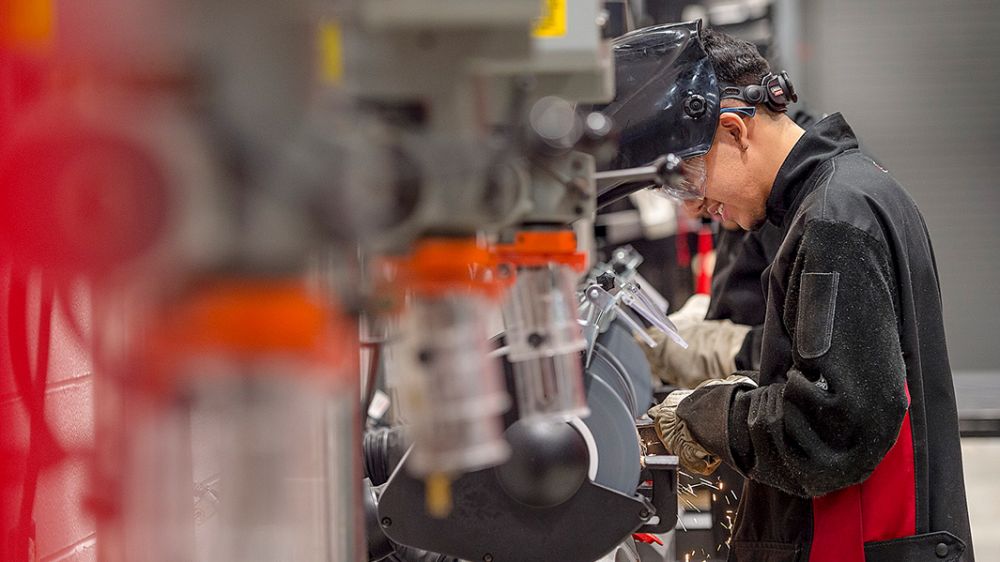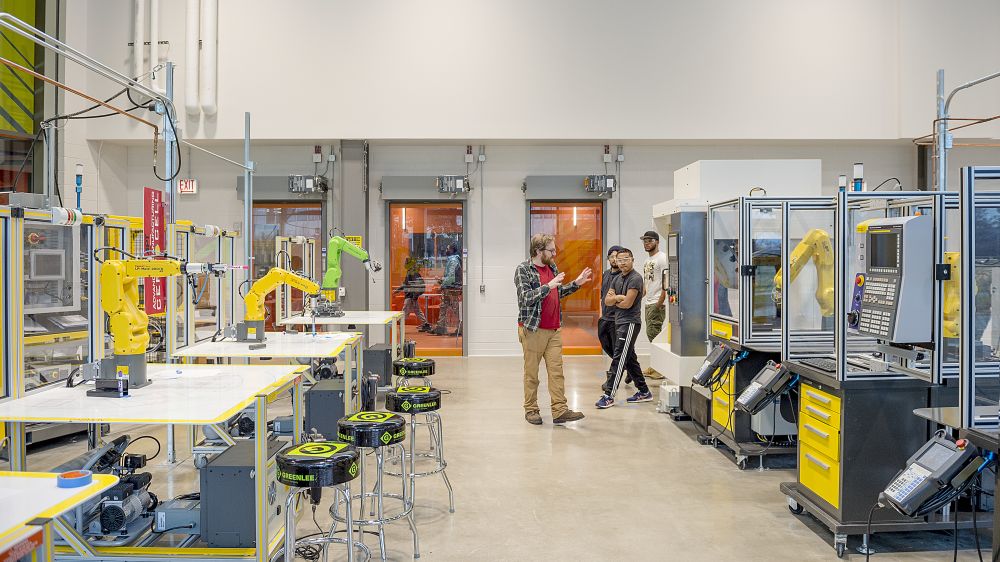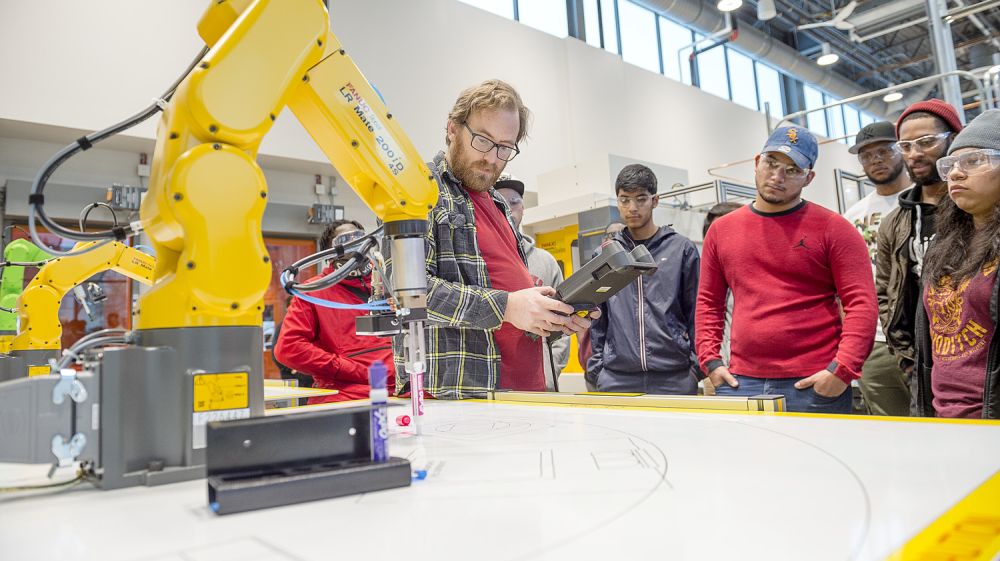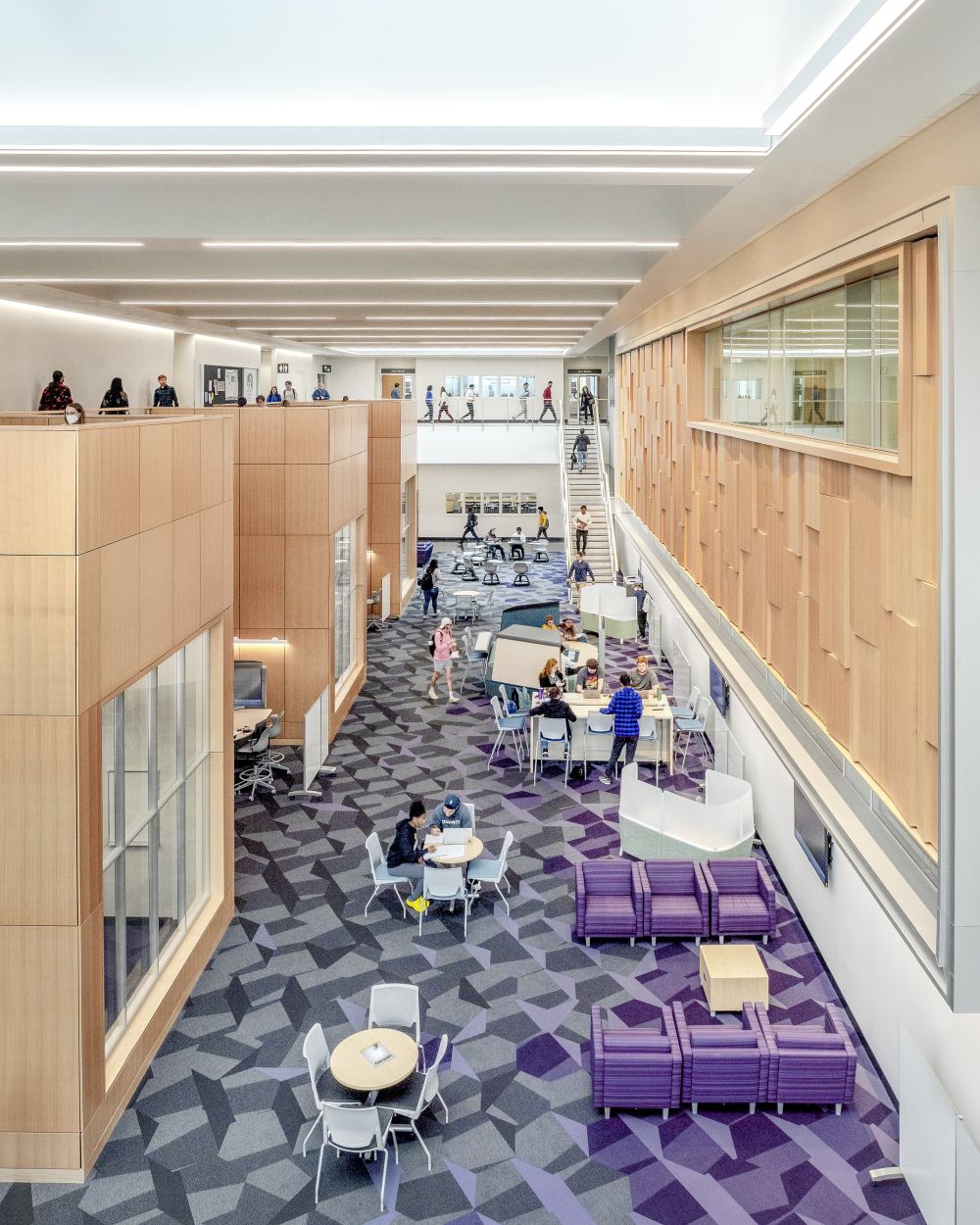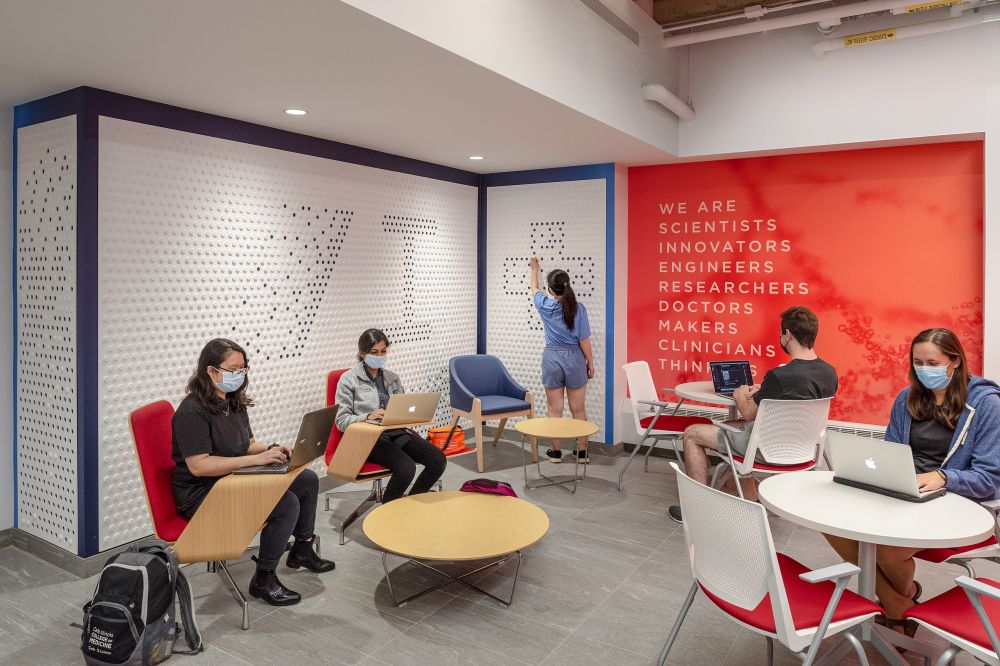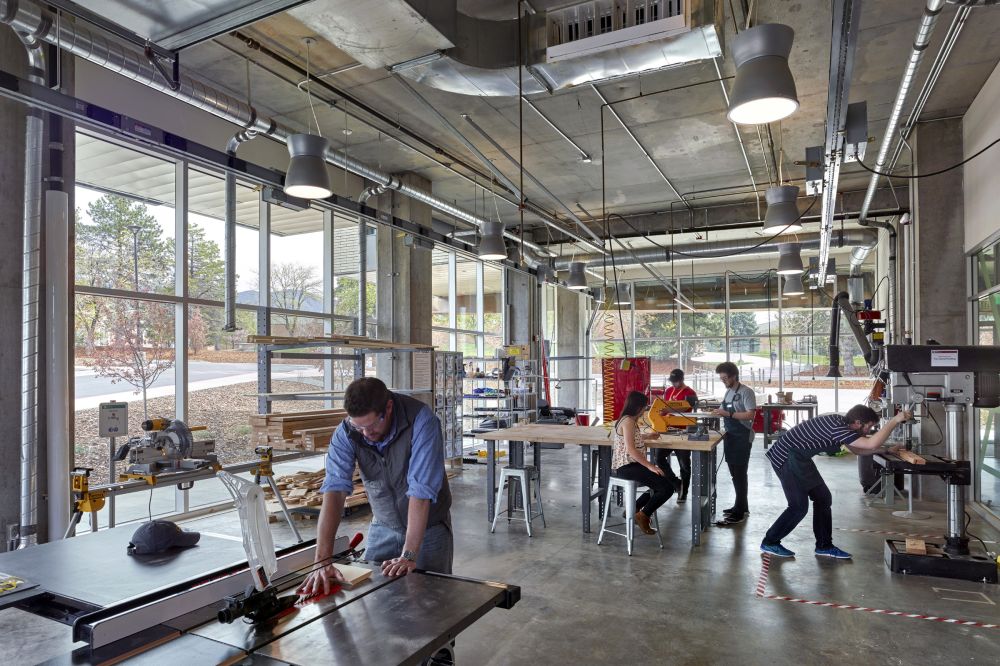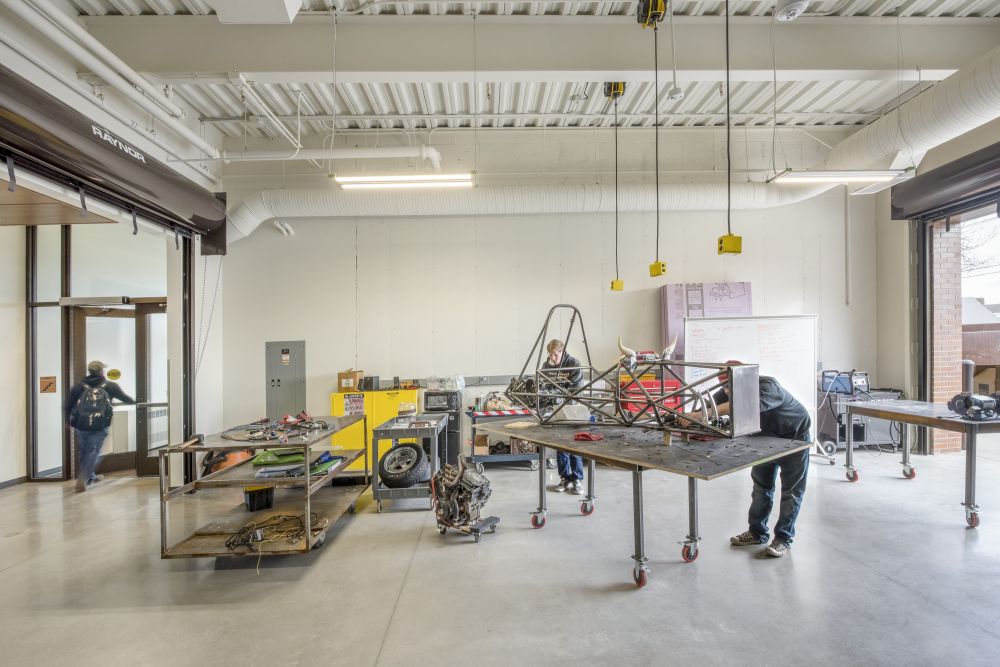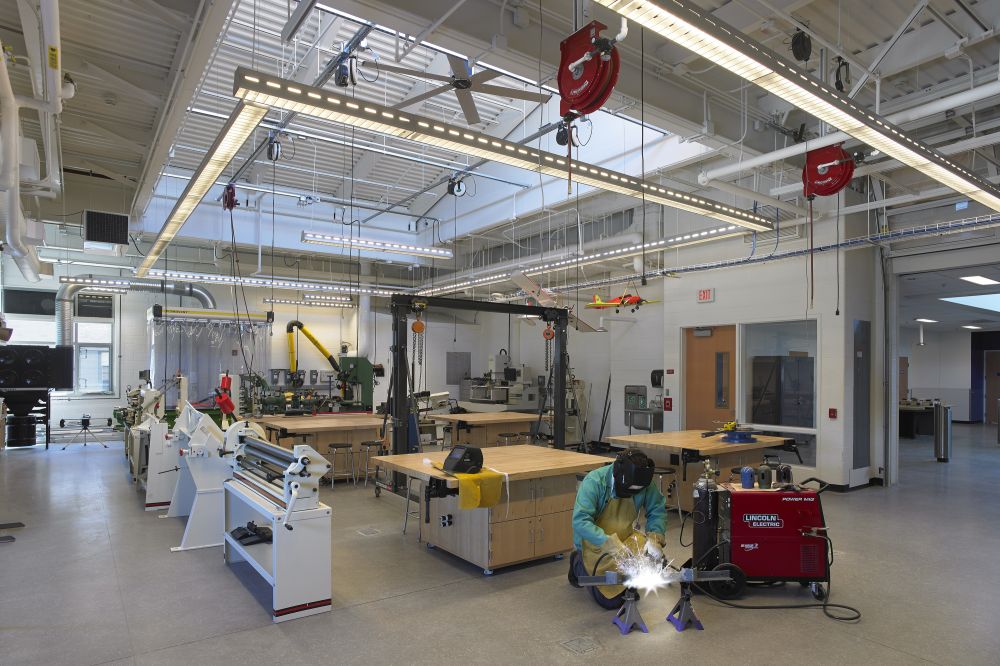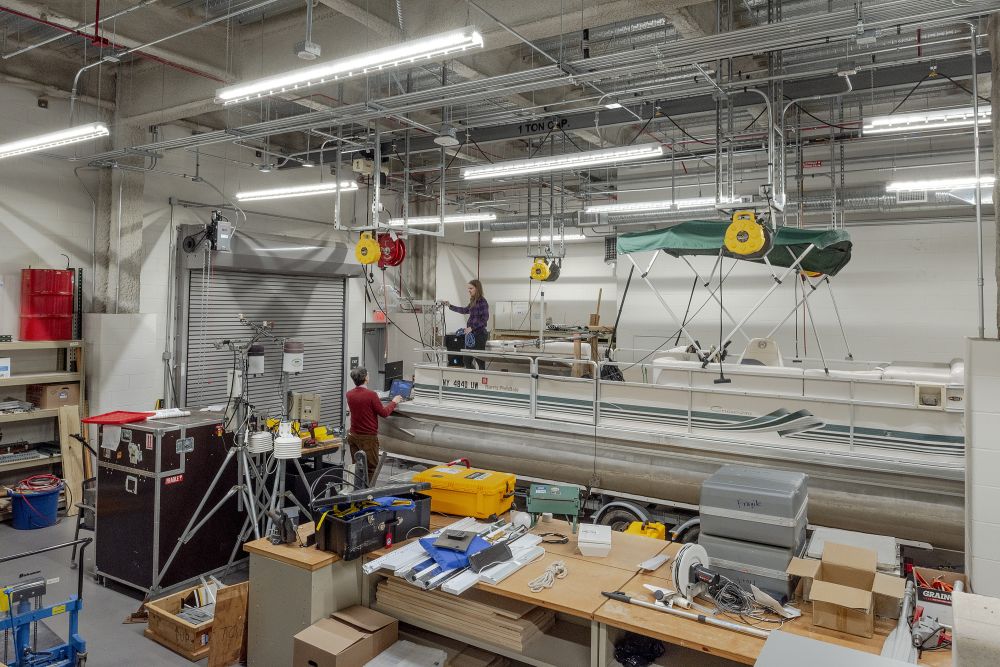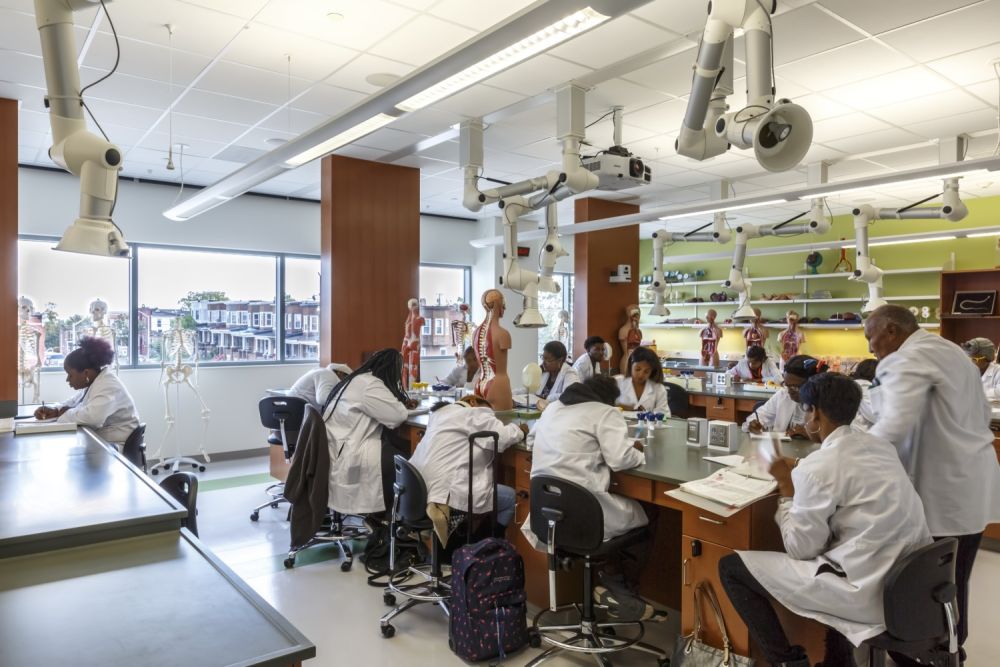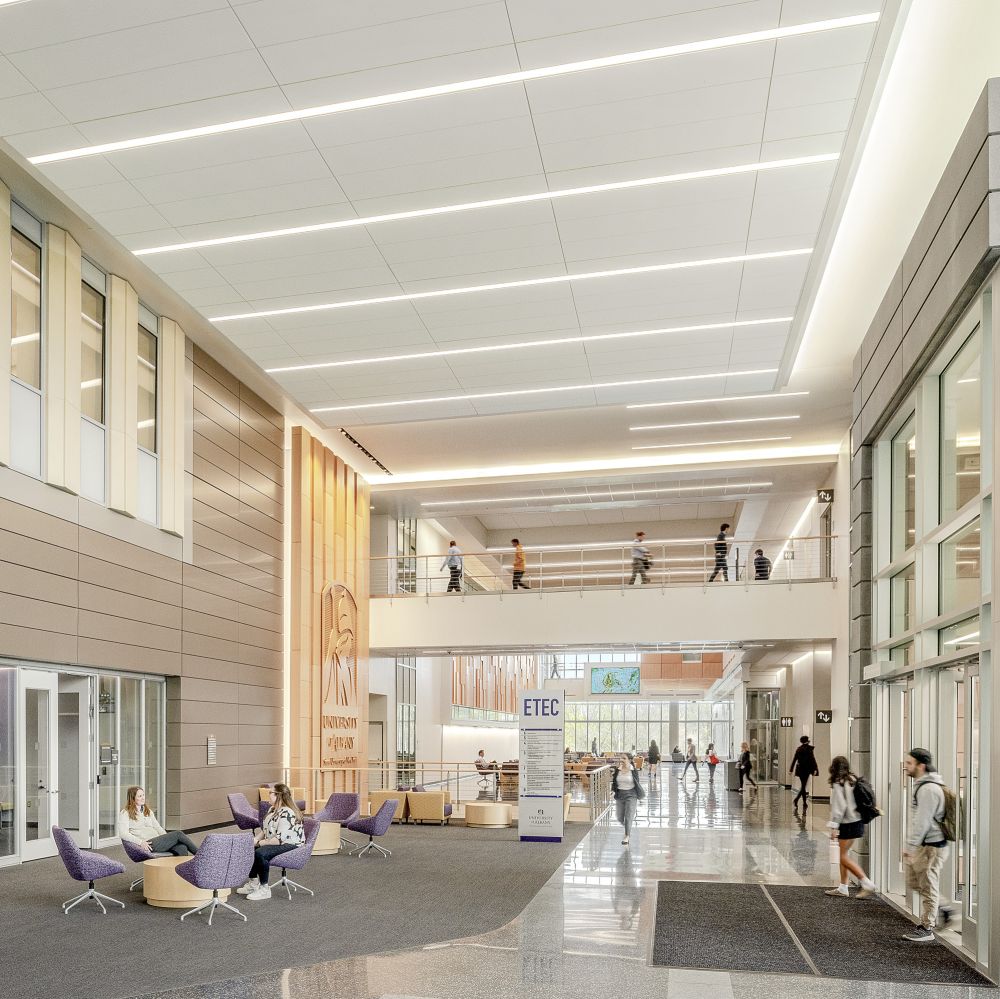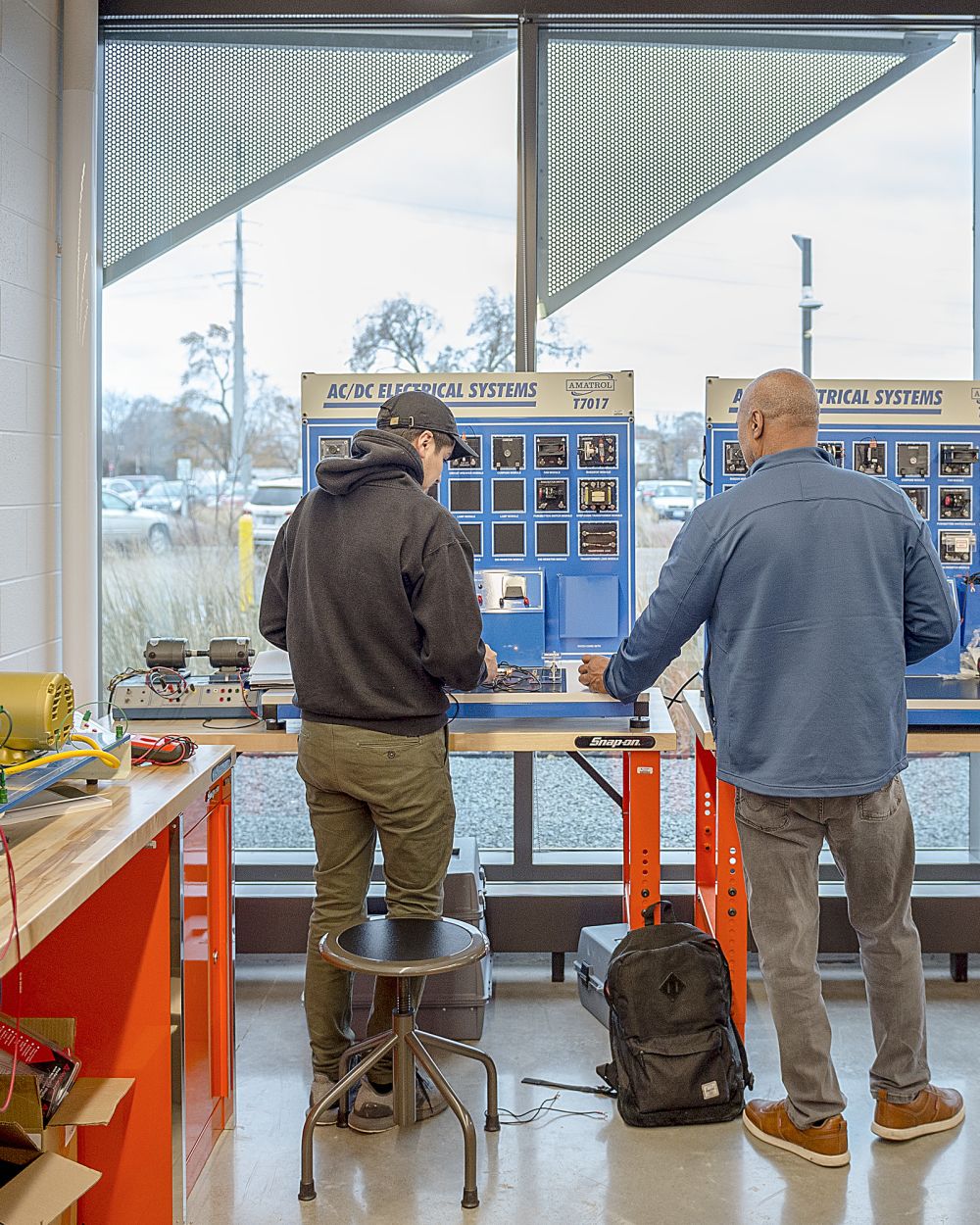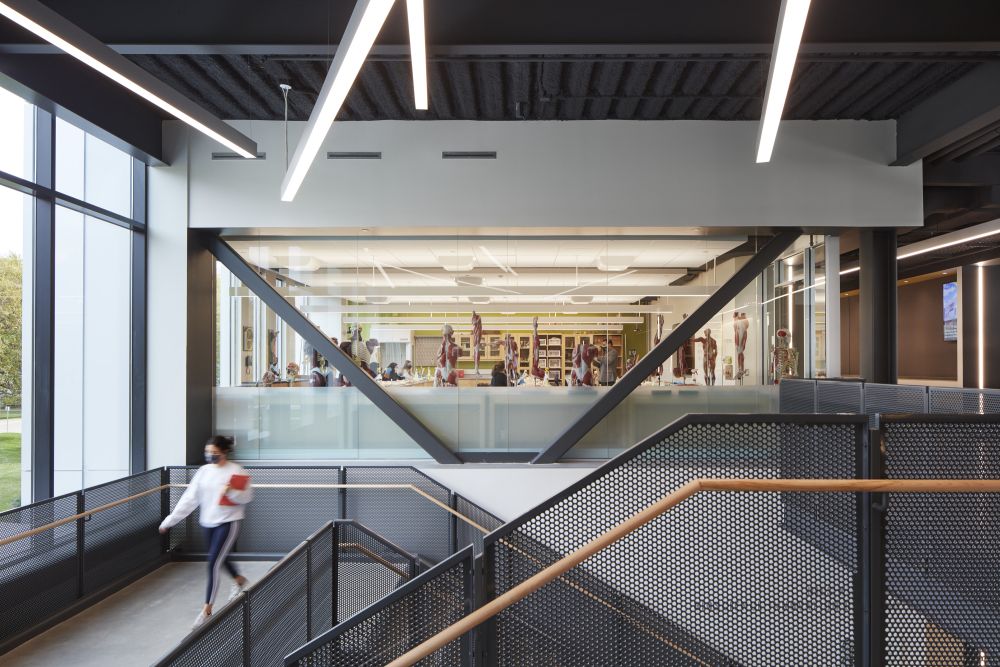How design can shape the future of engineering education
Charles Smith, Regal Leftwich and Trevor Calarco
September 14, 2022
Social Sharing
Tomorrow’s engineers have an incredible opportunity to address complex societal challenges of the 21st century by creating new solutions that span across disciplines. Institutions across the country are rethinking how to best educate and prepare these future engineers. As the engineering learning paradigm evolves, so must the environments where this learning is taking place.
The workplace changes constantly, and top employers are looking for more than a depth of technical knowledge from new engineers. They are also looking for collaborative team members who have advanced problem-solving and communication abilities. To help address the workplace demand for these skills, colleges and universities are retooling their curricula and environments to catalyze collaboration, interdisciplinary convergence and creative problem-solving.
Based on our experience working with progressive engineering schools across the country, we have identified key factors to shape environments that foster success for the next generation of engineers.
Channel local, regional and national opportunities
Colleges and universities should perform a deep-dive analysis of engineering-related fields and align their curricula to meet their engineering program’s strategic goals. There are massive opportunities at every level of higher education—from community colleges to large institutions.
At the community college level, there are hyper-local opportunities to meet immediate needs in the workforce with high-quality skills training and problem-solving. The design of these spaces should focus on student-centered learning with highly specific technologies and simulation spaces that can best prepare students with hands-on skills training. Local industry engagement and partnership are excellent ways to mold the future workforce.
Regional and state colleges and universities have similar prospects for expanding engineering degree programs—or even for launching one for the first time. These institutions are nimble enough to respond to market trends in the regional economy and develop a highly-skilled, problem-solving workforce ready to take on challenges in manufacturing, healthcare, infrastructure, energy, security or preparation for graduate studies. While the basics of mechanical and electrical engineering apply here, there are entirely new sectors to be considered, such as quantum computing, semi-conductor engineering and cybersecurity. In turn, the learning environments in these spaces need to be infinitely flexible to easily respond to changing workforce opportunities and technology evolution.
For larger, research-heavy universities, possibilities abound to meet some of the highest-level engineering career opportunities both nationally and internationally. The challenge to recruit and retain the best talent—both faculty and students—is constantly on the minds of presidents, deans and provosts. In addition to the obvious need to create top-tier engineering learning environments, building design with robust and adaptable research platforms can serve as a programmatic icon and recruitment tool on campus—fostering an appeal of place that attracts top-notch students and professors who seek the robust capabilities of universities with large science programs.
Envision engineering as a campus aggregator
The United States experienced a “science building boom” of new construction after the Second World War. These mid-century buildings—still the dominant science building on many campuses—are often designed as compartmentalized laboratories with little to no open space or natural light. These “above-ground basements” are a demotivator and can affect recruitment and retention for students and faculty alike—ultimately affecting the bottom line. Sometimes these buildings can be renovated to provide new life, and other times universities might decide on something entirely new.
Campuses and institutions are embracing a new transformative era: The engineering building has become the new student union—an aggregator on campus. To transform science education, the engineering or applied science building should be envisioned as a cornerstone of campus life. To accomplish these ambitious goals, a careful site study and programming plan are needed at the early stages of design. Ensuring proper orientation to optimize foot traffic and daylighting strategies is one of the first steps to designing a successful STEM building. Transparent spaces allow students to see peers in action. This visibility generates a dynamic culture for the building, program, university and surrounding community.
Another critical aspect of aggregation is enhancing the inherent cross-disciplinary aspects of engineering. Provide every opportunity for different departments or colleges (i.e., business or arts) to have proximity in, or to, the building—whether through shared classrooms or by placing entire departments within the same building. Cross-disciplinary learning manifests not only in the technical teaching spaces and laboratories, but also in the “soft spaces” of informal learning and collaboration with plenty of furniture solutions to promote extended hangout/study sessions. “Linger longer” is not just a retail concept—it can also be a philosophy around which to build a program’s culture.
Create “hackable garages” to encourage entrepreneurial spirit
Apple, Hewlett-Packard, Amazon, Google. How did they get their start? All in garages! These spaces worked so well because they offered limitless possibilities to accommodate exactly what creative minds needed at that moment in time. Entrepreneurs can add, remove, hack and experiment in a garage without fear of ruining a pristine space.
Universities should include this “hackable garage” model in student-centric learning spaces to foster an entrepreneurial, no-holds-barred spirit of discovery. Moveable furniture, lab benches and a variety of prototyping equipment are a must. Ample flexibility with technology hookups, as well as overhead service distribution solutions, can also increase the overall utility of the space.
Address equity and diversity head-on
The future of STEM relies on a robust workforce, and the number of women and underrepresented minorities pursuing engineering and other science fields is drastically low in the United States, as well as in many other countries. While this has been a decades-long struggle, there needs to be real and acute action to finally address this issue. Design can be part of the solution.
Active and engaged learning is a strategy that has been shown to increase performance in STEM undergraduate students and also contribute to the development of more positive STEM identities and increased retention in STEM majors. Educators are continually recalibrating “traditional” learning environments to create active learning environments that emphasize real-world, problem-solving techniques. With mobile furniture and lab benches, classrooms can be configured into team-based layouts to foster active learning.
Additionally, research has shown that access to role models—educators, professionals, parents, etc.—whom minority students can relate to can increase the development of a positive STEM identity. Recruiting and retaining incredible and diverse faculty are key to fostering a sense of belonging. Creating comfortable, welcoming spaces in science buildings also fosters that belonging.
Bring industry inside to increase real-world opportunities
Becoming increasingly prominent on college and university campuses, private industry can help boost funding for engineering and other STEM programs that are addressing a need for skilled workers in a specific field of work.
Creating prominent, viewable spaces that encourage partnerships and collaborations with students and faculty is a must for the advancement of these relationships. Moreover, consider integrating permanent spaces for industry to be physically located within the building; the increased proximity and exposure will foster even more crossover in the future.
Look toward the future
Schools of engineering have enormous potential to build a better, more diverse, more equipped workforce and entrepreneurs who will tackle global challenges in the decades to come. Providing the best teaching and learning environments should not be overlooked when crafting new ways of delivering the highest-quality education for the next generation.
